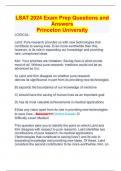Samenvatting
Summary Implementation & Evaluation (HEP4205)
This document contains the case notes taken during the tutorials for the module HEP4205 Implementation & Evaluation. The author takes no responsibility for the correctness and completeness of the notes as they are the product of the discussions in the PBL sessions and may differ between different ...
[Meer zien]






